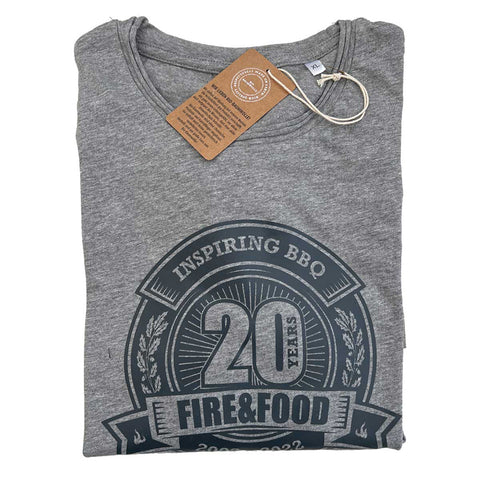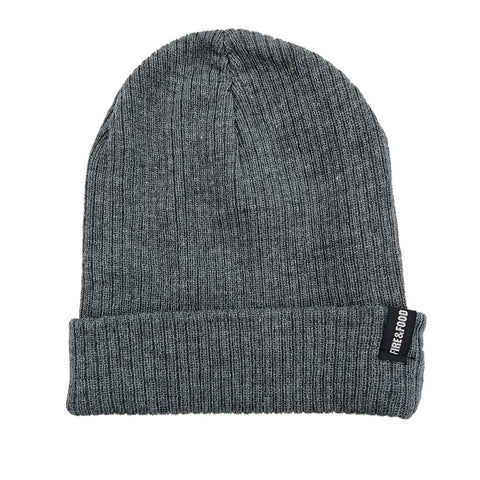Cooking with the Dutch Oven
Anyone who is more into grilling and outdoor cooking will at some point not be able to avoid a Dutch oven. It is extremely practical for many preparations. And it also fits much better with the somewhat rustic aura that is inherent in cooking over flames. But buying such a pot is one thing, cooking with it is another. – By Markus Mizgalski
It's all a matter of definition
In order to understand how cooking in a cast iron pot works, it is first necessary to clarify what is actually being talked about by a Dutch oven, or DO for short. Most people will probably understand a Dutch oven to be a cast iron pot that has three or four feet at the bottom and a lid that also has feet so that it can be used as a pan. On the side with the feet, the lid also has a slightly raised edge. To be more precise, however, this is a so-called camp fire Dutch oven. It is designed so that it can be placed on coals or in the embers of a campfire. And additional coal or embers can be shoveled onto the lid - the edge for this - to generate top heat. The classic DO, however, is a cast iron pot with a lid, which ideally also has a bracket with which it can be hung over the fire. Here, the temperature is then simply regulated by the height at which the pot is hung; with a tripod and chain, this is no problem.
The classic way
One of the most common methods of Dutch cooking is the combination of Camp Fire DO and briquettes. Here, the temperature can be regulated by the amount of egg coals under the pot and on the lid. However, this results in a lot of heat loss and, in windy and cold weather, significantly higher fuel consumption. It makes sense to use this setup in conjunction with a windbreak. However, this must not be designed in such a way that it prevents combustion air from reaching the coal. The advantage of this method is relatively precise and reproducible temperature control.
For a Dutch oven heated with briquettes, a windbreak is extremely useful.
For good bottom heat you can also use the Atago from Petromax up to a certain pot size.
The Dutch in the gas grill
For those who prefer to use gas rather than charcoal when grilling because of the ash and the associated cleaning effort, Dutch cooking with briquettes is hardly an option. But you can also use a cast iron pot in conjunction with a gas grill. In this case, however, we recommend a model without feet that could get stuck in the grate or in the flame distributors. With many grills, the pot can be inserted into the round opening of an accessory system that may be present.
There are now several options for heating the pot. The pot can either be used on the side burner if it is not too heavy. This is a good option if you are making classic dishes - including those where you need to reduce liquids. Here you typically work without a lid and with (low) bottom heat. This works quite well on side burners and infrared burners because both ultimately only have a maximum output of 3.5 kW, but this can be adjusted down considerably.
Or, as a second option, you can use the pot in the cooking chamber. Here, too, it can be used directly over one or two burners with direct bottom heat for searing and then for reducing at a low heat. If it is used with a lid, it is no problem to use the Dutch oven for baking or gratinating at indirect heat. You benefit from the even heat that cast iron enables.
If you're in a hurry, you can use a half-heated chimney starter for really high bottom heat.
A Dutch oven can be heated with embers in the fire bowl. However, this is not at all efficient.
A DO can be used in a variety of ways in a ceramic grill: for searing, cooking, braising and baking over indirect heat.
Monolith has a special cast iron pot that was specially developed for the half-moon system and thus for the round shape of the grill.
The Dutch in the Kamado
A very nice variant is the combination of Dutch oven and ceramic grill. Depending on the internal construction, the pot can be placed very close to the coal to get a lot of heat for searing. It can also be used with a deflector stone on the grill for baking, then with the lid and the Kamado lid closed. If you leave out the deflector and turn the grill down, you get a nice bottom heat for reducing the heat. A system from Monolith is particularly flexible here, where a specially shaped Dutch oven can be hung in a height-adjustable ring system. This offers a lot of possibilities, especially with the divisible coal basket. By the way: The Dutch can be used in a very similar way in a kettle grill, although the coal consumption is higher. Important for both the kettle and the Kamado: The air and temperature are controlled in exactly the same way as with a grill.
Dutch oven and gas cooker
The biggest challenge is the combination of a stool cooker and a Dutch oven. For many, this seems to be a cheap alternative to a gas table like the one offered by Petromax. However, the burner output of this table is designed for use with a Dutch oven, and the burners are more in the range of a side burner on a grill. Stool cookers, on the other hand, which are the right size for typical 6 or 9 liter pots, usually deliver 7.5 kW or more. High heat is therefore not a problem, but turning it down is. On a low flame, the ring burner of a cooker is usually very sensitive to wind or tends to go out by itself if there are slight pressure fluctuations. Temperature control is extremely difficult here. If you want to make things a little easier, decouple the pot from the direct heat by, for example, placing a cast iron plate between the burner and the bottom of the pot.
Dutch oven and induction plate
Cast iron pots generally work on induction hobs. And of course you can take a mobile induction hob outside with you as long as it is not raining. With such a hob you can regulate the temperature very precisely, and the wind hardly bothers you. However, it can happen that at least the 220 volt hobs intended for domestic use switch off due to overheating if you use a cast iron pot for too long at maximum power for frying. And - similar to a stool cooker - you cannot get any top heat.
With a gas grill, an infrared burner can serve as a side burner. The only thing to consider here is the load-bearing capacity.
Stove cookers often have too much power for a Dutch oven. However, you can increase the distance to the burner by using a trivet.
Conclusion
How you heat your Dutch oven depends on what options you have available. There are many different ways to get bottom heat. However, for top heat you need a closed cooking chamber. Or you can use the classic version with briquettes on the lid.





















